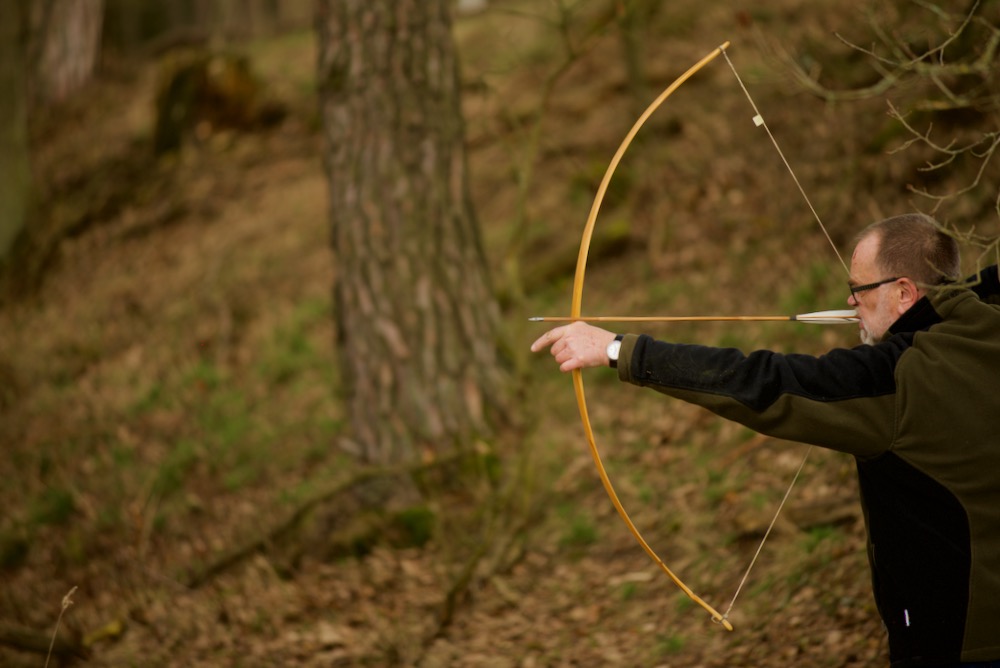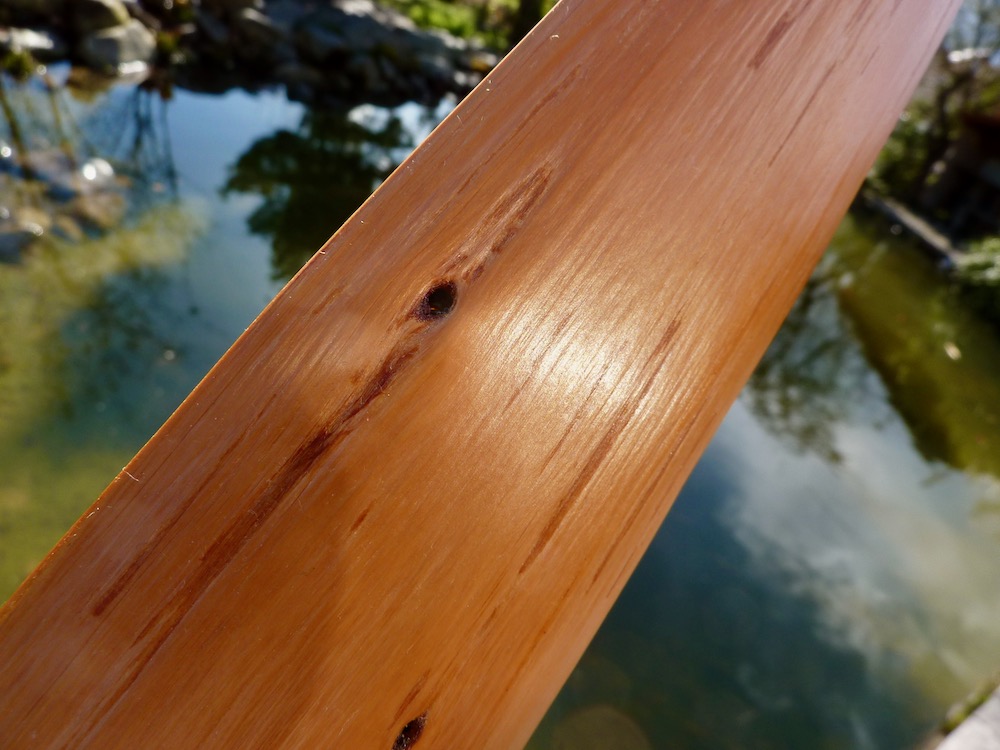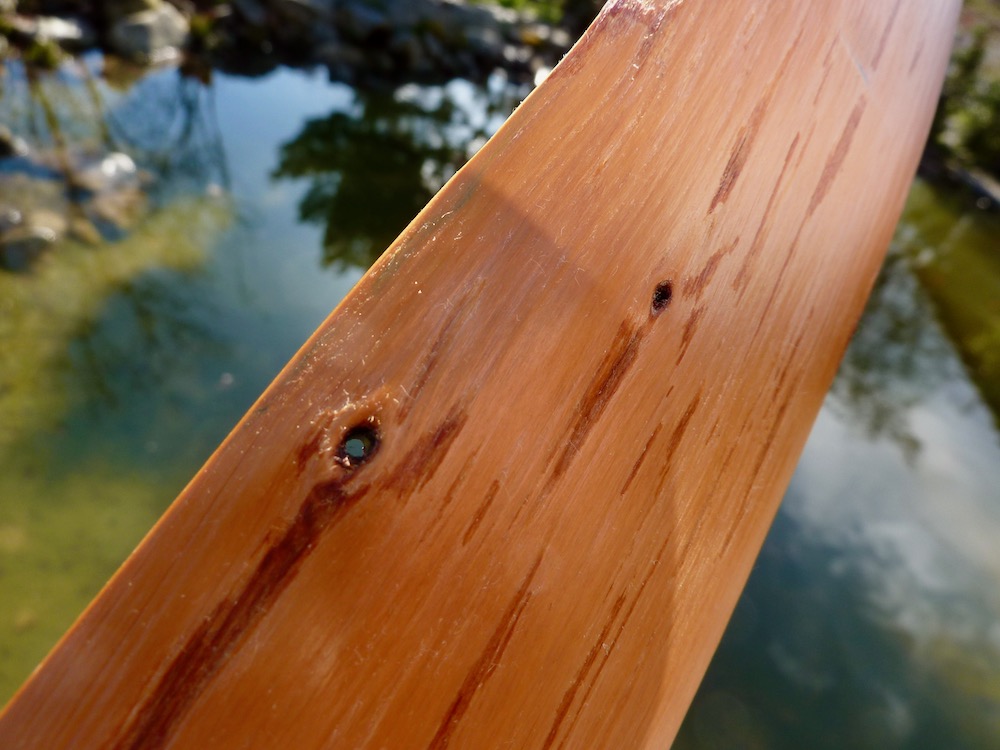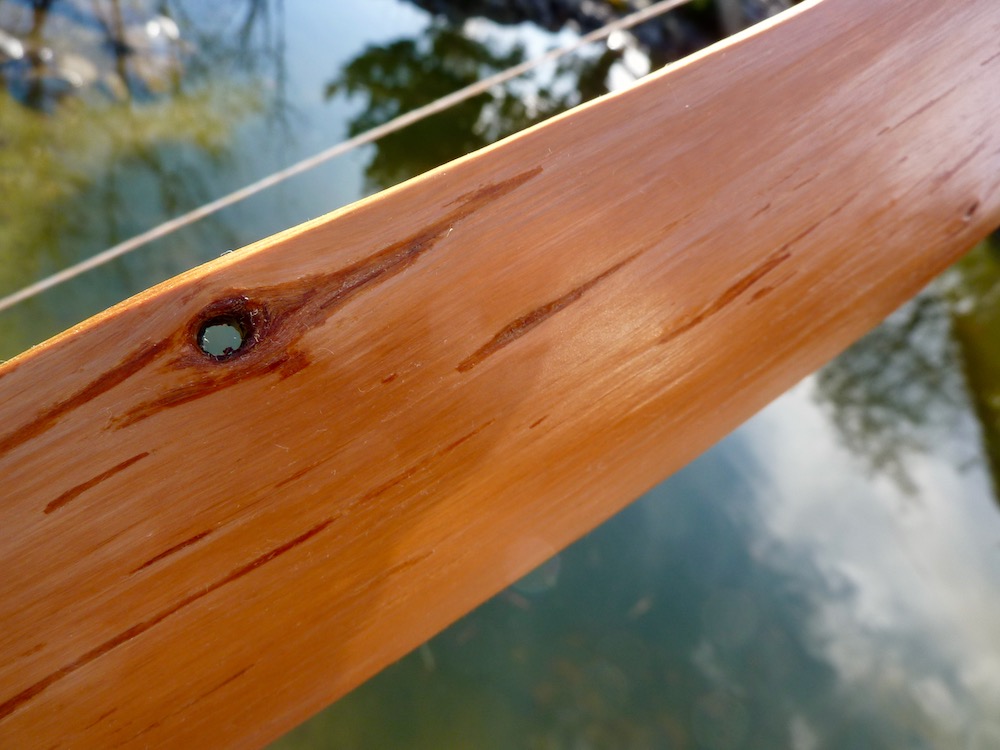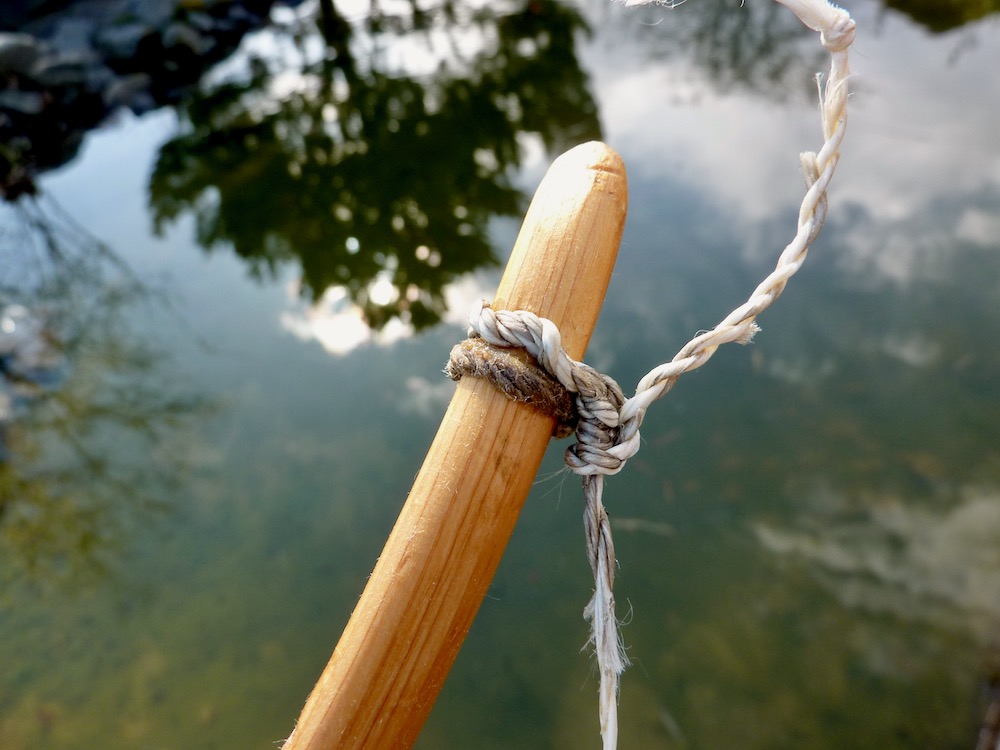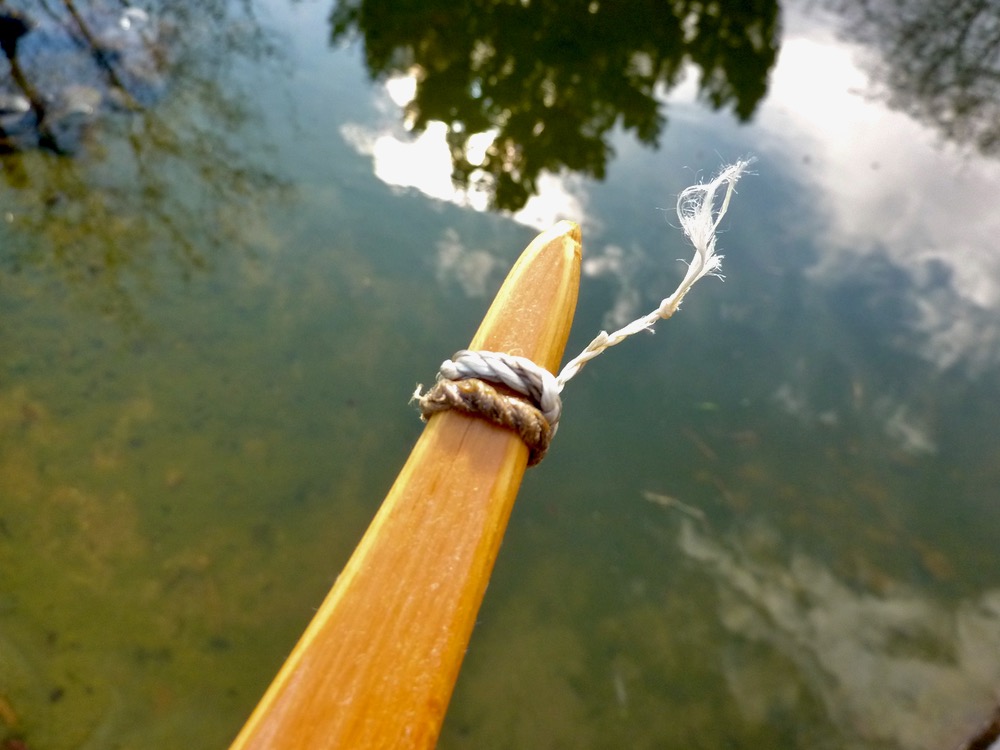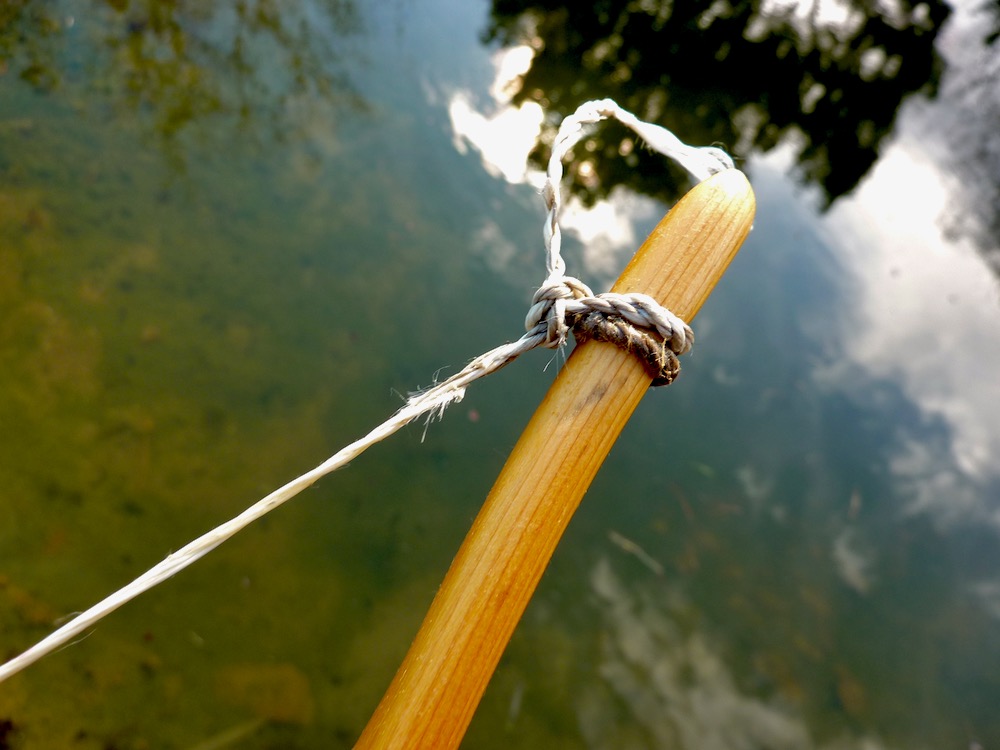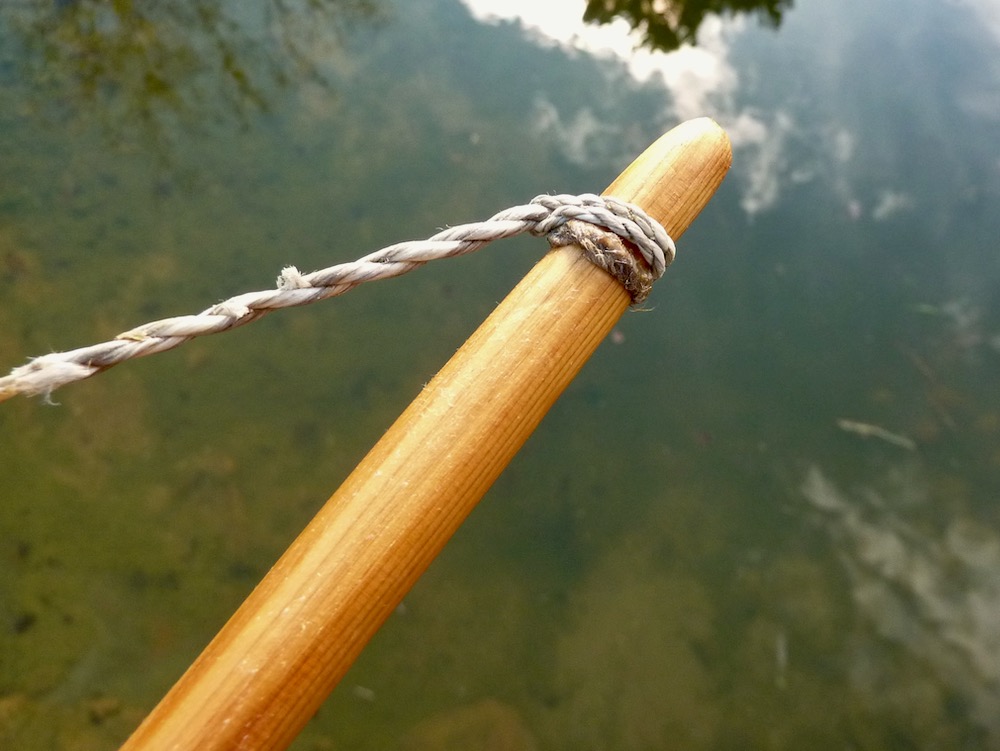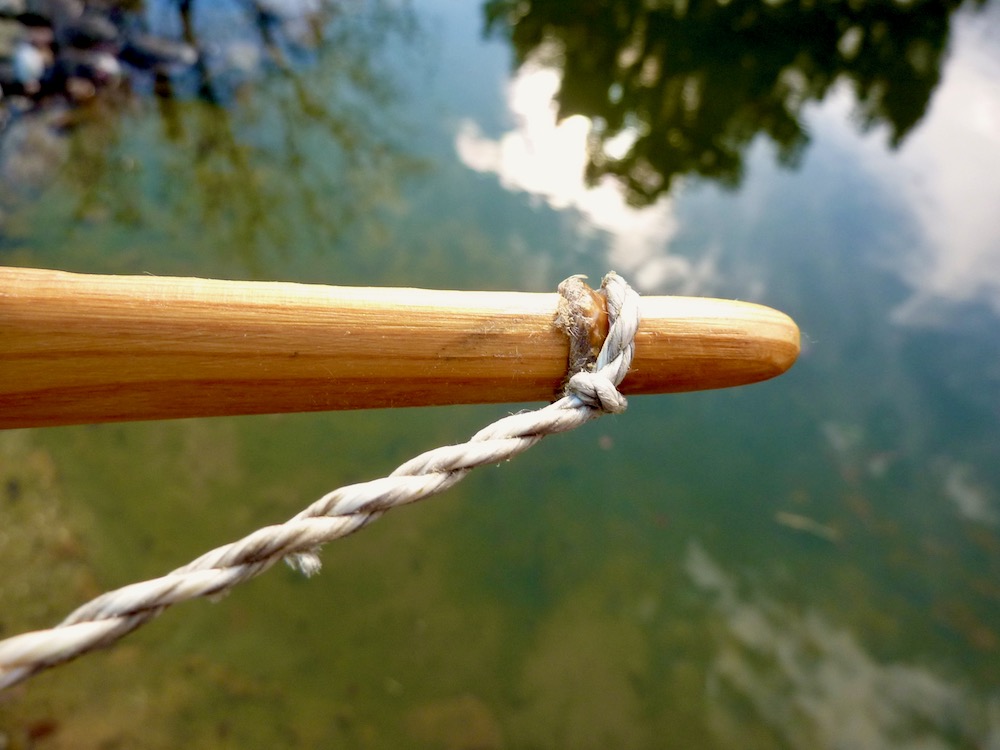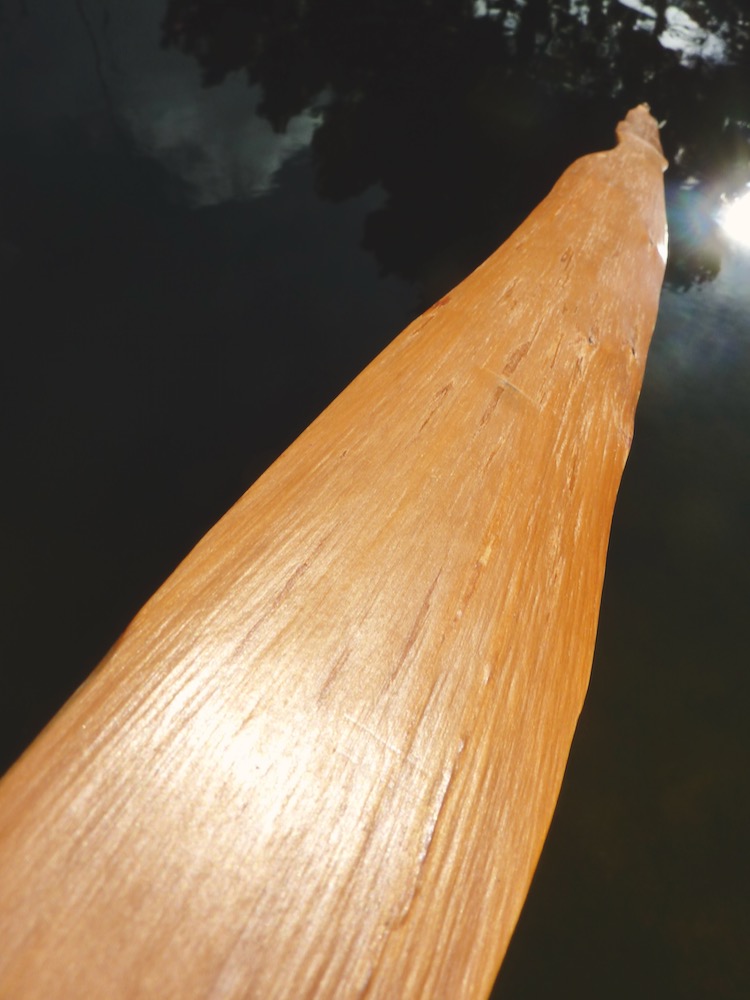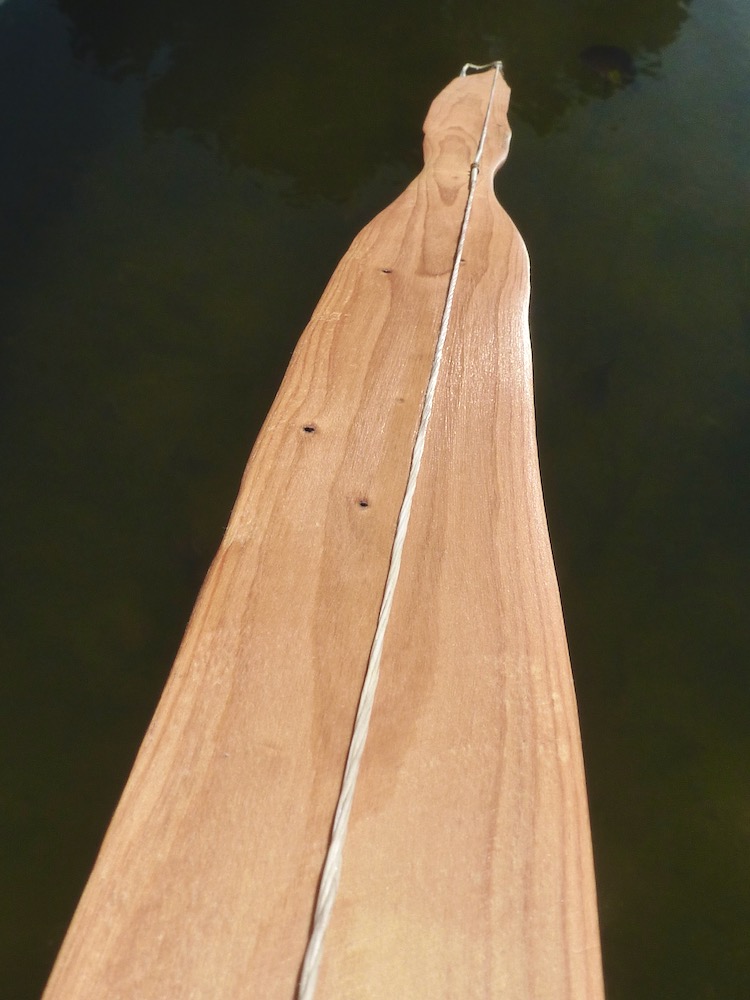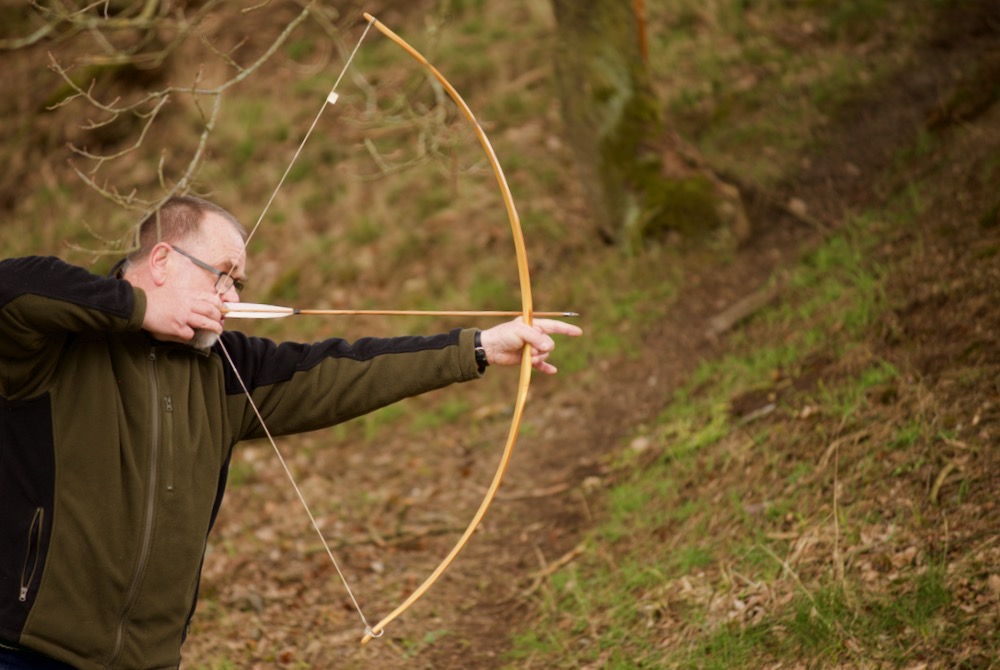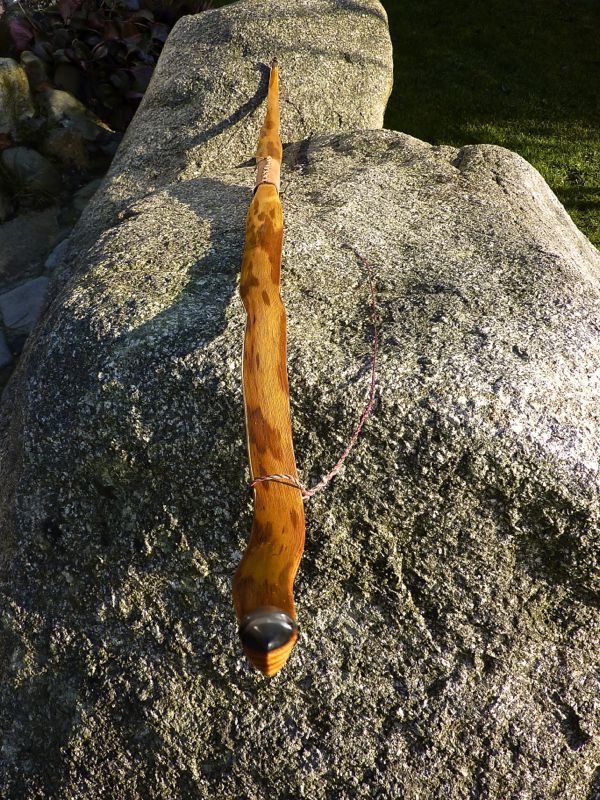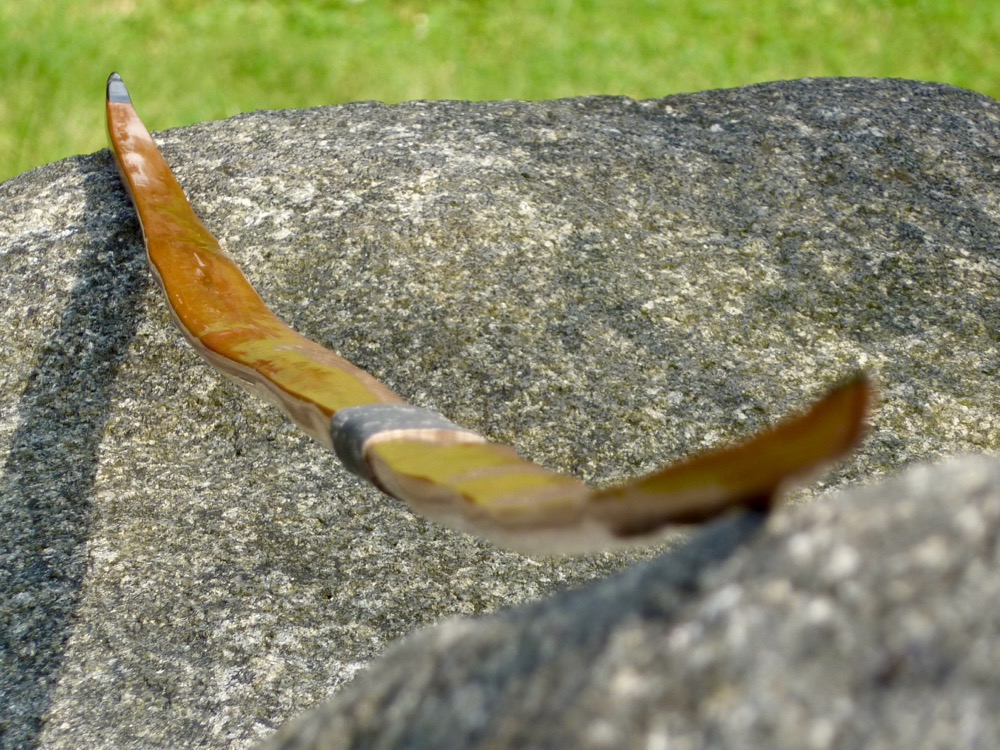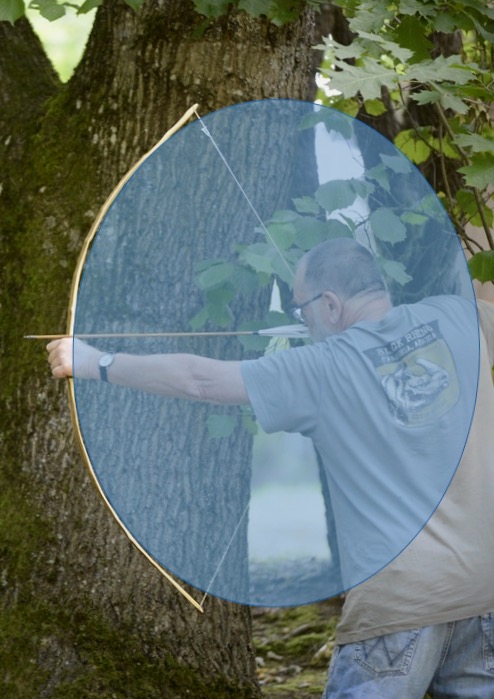Probably the lightest weight bow ever built by me. Not seriously a bow, she has to be kept out of the wind to prevent lift off. But a lil kid may be getting happy with her.
Design is a paddle with flat belly tapering into roundish tips. The tips got hemp ring nocks (glue secured). The string is fixed with a ‘tsuru’ knot on the lower tip and with a self-securing ear at the upper tip.
Ten little holes from fallen out dead branches makes a nice side effect.
All in all, this species of wood isn’t a real bow wood.
dw/dl: 15#/26”
ntn: 54”
bh: 6”
max. w.: 2½ “
reflexn: 0”
mass: 157 gram
symmetrical
10”: 02,6
12”: 04,2 (+1,6)
14”: 05,5 (+1,4)
16”: 07,1 (+1,5)
18”: 08,5 (+1,4)
20”: 10,0 (+1,5)
22”: 11,6 (+1,6)
24”: 13,3 (+1,7)
26”: 15,1 (+1,8)
